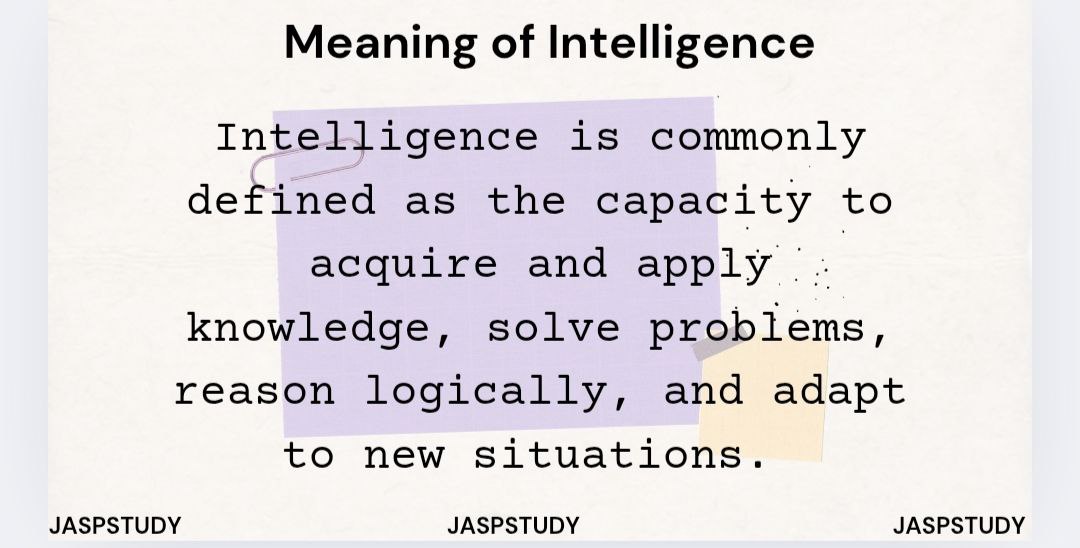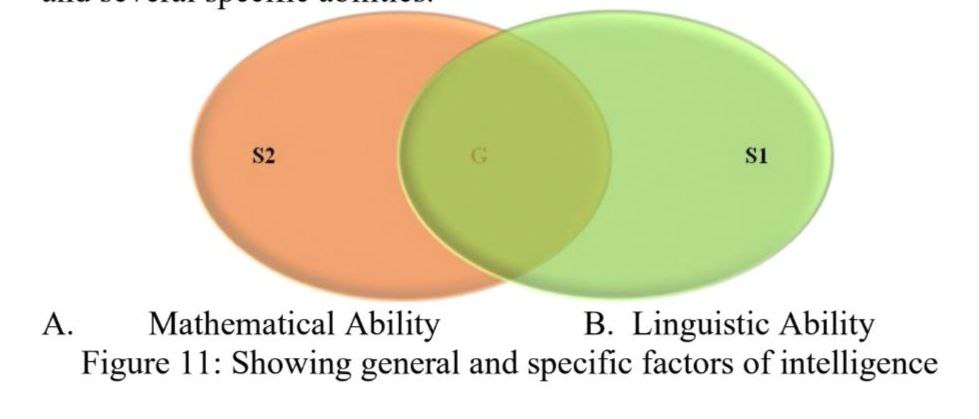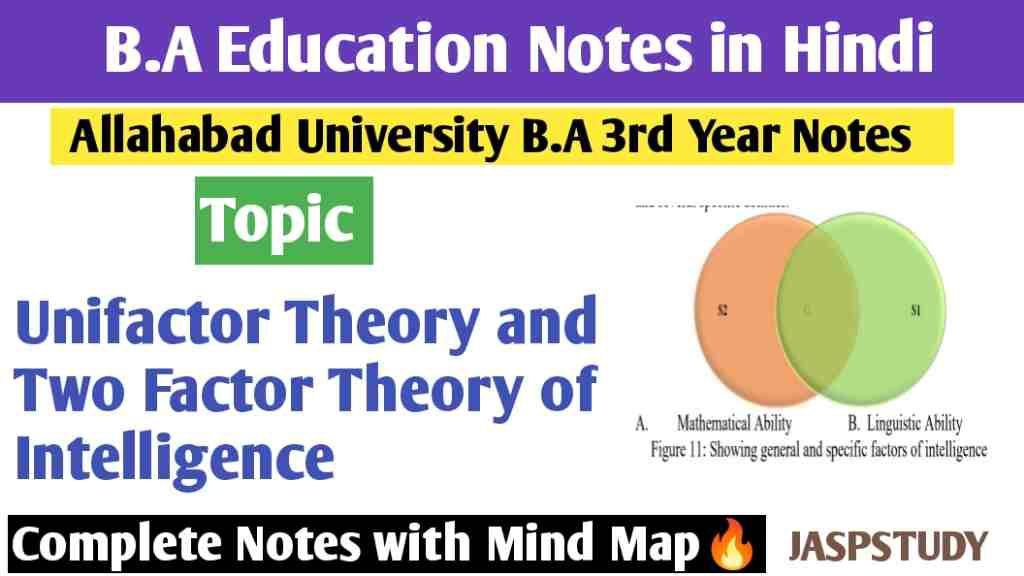In this post we will discuss about Unifactor Theory and Two Factor Theory of Intelligence.

Unifactor Theory and Two Factor Theory of Intelligence
Unifactor Theory
Binet, Terman,Stern and Johnson can be taken significantly among the exponent and supporters of this principle. Johnson, who is considered the first promoter of this principle, says that intellect is an omnipotent mental process that rule uniformly on all human activities.
It is not under anyone but all other mental abilities are under it. Due to this trend, it is also called Monarecic theory. Intelligence is made of only one element. Bin Tarman etc. have considered only mental ability to be complete intelligence.
- Philosophy- Meaning, Definition,Nature And Branches
- Interrelationship Between Philosophy and Education
- Meaning Scope And Functions of Philosophy of Education
- Meaning,Characteristics and Theories of Intelligence
Two Factor Theory of Intelligence
Charles Edward Spearman formulated the two-factor theory of intelligence in 1904. This theory is a revolt against the monarchic or unitary theory of intelligence. Spearman’s theory is sometimes known as the eclectic theory of intelligence. Spearman held that intelligence is composed of two factors: one is general ability factor (G) that is shared by every task we perform and another is specific ability factor (S) that is responsible for a specific task only.
In this way, the general ability is found in all types of mental operations, whereas, specific abilities are related to specific tasks only. According to Spearman, every individual possesses a general ability and several specific abilities.

There are two ellipses shown in figure 11. Suppose ellipse ‘A’ represents the mathematical ability and ellipse ‘B’ represents the linguistic ability of an individual. Since an overlap occurs between two ellipses which means that a certain type of mathematical ability requires a certain degree of linguistic ability.
The overlapping zone is what is called ‘G’ (general factor). ‘S1’ and ‘S2’ represented two independent specific abilities. Greater is the amount of ‘G’, greater the life successes for an individual.
The amount of ‘G’ differs from individual to individual depending upon the presence of one’s cortical energy. Based upon the amount of cortical energy in the cerebrum part of the brain, Spearman called ‘G’ as the general fund of cortical energy. The maximum quantum of this cortical energy is fixed and its utilization depends upon the motivation, previous experiences and the type of environment in which a person breathes. ‘G’ is inborn and is used in every task we do.
‘S’ is unique to specific performances and is not common to all kinds of cognitive tasks. It is an acquired ability. In the above case, the ‘G’ factor in conjunction with the ‘S’ factor helped in developing both mathematical reasoning and language learning abilities, but factors like ‘S1’ and ‘S2’ have their own specific functions.
‘G’ is shared partly in mathematical ability and partly in linguistic ability. In this way, ‘G+S2’ developed mathematical ability and ‘G+S1’ developed linguistic ability. Every intellectual activity involves a certain amount of ‘G’ and a certain amount of ‘S’. However, certain cognitive functions require a high amount of ‘G’ and less amount of ‘S’ and certain other cognitive functions depend largely on ‘S’ and less on ‘G’.
For instance, mathematical reasoning shares a high amount of ‘G’ and less amount of ‘S’ whereas musical intelligence depends largely on ‘S’ and less on ‘G’. It is to be noted that ‘G’ is only one and ‘S’ are numerous. Another example is that a doctor besides performing his general profession is a good cartographer. A pilot may also have a specific ability to write and end up being an author. Thus, the doctor has a high amount of ‘G’ through which he cracked the NEET exam and a low amount of ‘S1’ through which he becomes a cartographer. A similar procedure applies to the pilot.
Implications of Two Factor Intelligence Theory
1. Intelligence Testing
Spearman’s theory laid the groundwork for modern intelligence testing. Tests often assess both general cognitive ability (g) and specific abilities (s), providing a comprehensive view of an individual’s intellectual capabilities.
2. Educational Assessment
The Two-Factor Theory suggests that educators should recognize both general intelligence and specific strengths or weaknesses when developing educational programs. Tailoring instruction to leverage specific abilities can enhance learning outcomes.
3. Critiques and Developments
While influential, Spearman’s theory has faced criticism, especially from those who advocate for multiple intelligences or alternative theories that emphasize a wider range of cognitive abilities. For example, Howard Gardner’s theory of multiple intelligences posits that intelligence is not a single entity but a collection of various modalities.
Conclusion
Spearman’s Two-Factor Theory of Intelligence provides a foundational framework for understanding intelligence as both a general ability and a set of specific skills. This theory has significantly influenced intelligence research, testing, and educational practices, even as new theories continue to expand the understanding of human intelligence.
- Origin and Geographical Extent of Harappan civilization
- Main features of Mathura Style of kushana Sculptural Art
- Features of the Harappan civilisation
- Sailent features of the town planning of Harappan civilization
- Write a detailed note on Kayatha Culture and its salient features
- Write an essay on Jorwe Culture
- Main Features of Mauryan Art
- Discuss The Philosophy of History of Arnold Toynbee
- Date of coronaion of Kanishka1|Date of Accession of Kanishka 1


I think you have noted some very interesting details , thanks for the post.